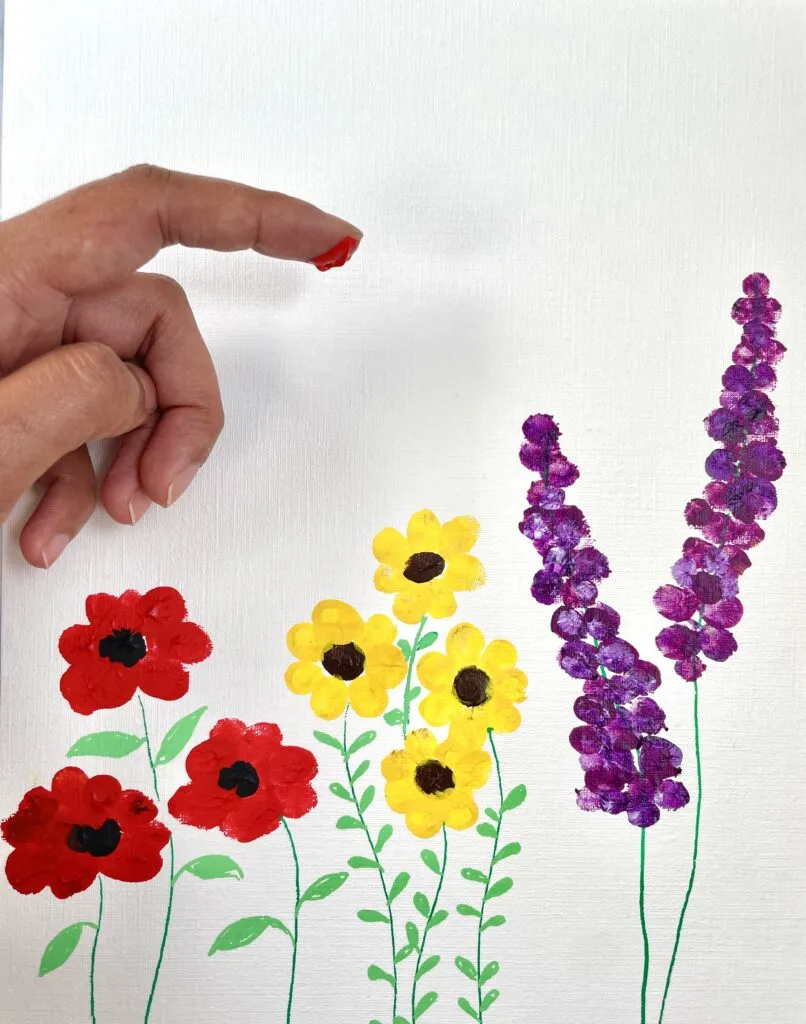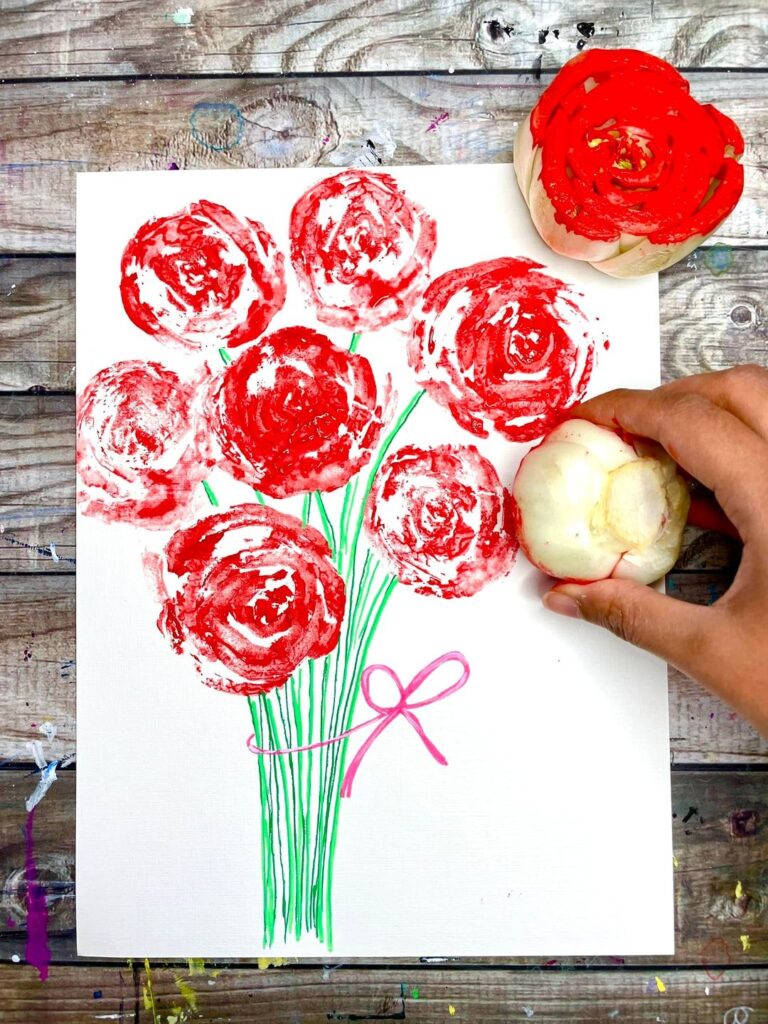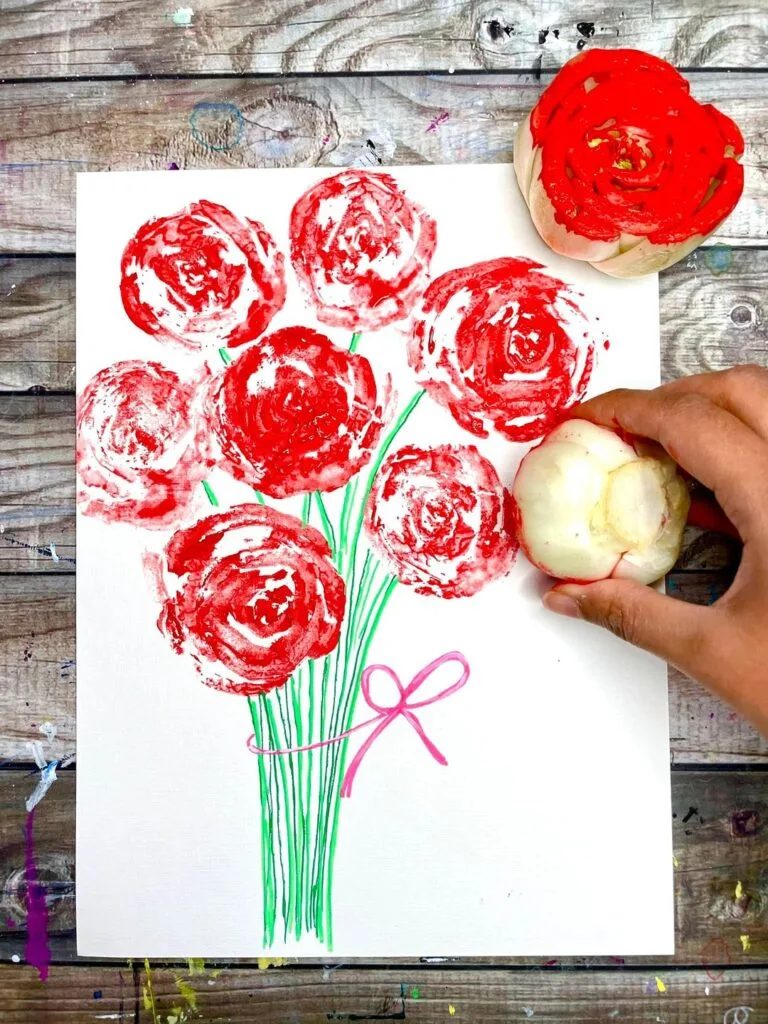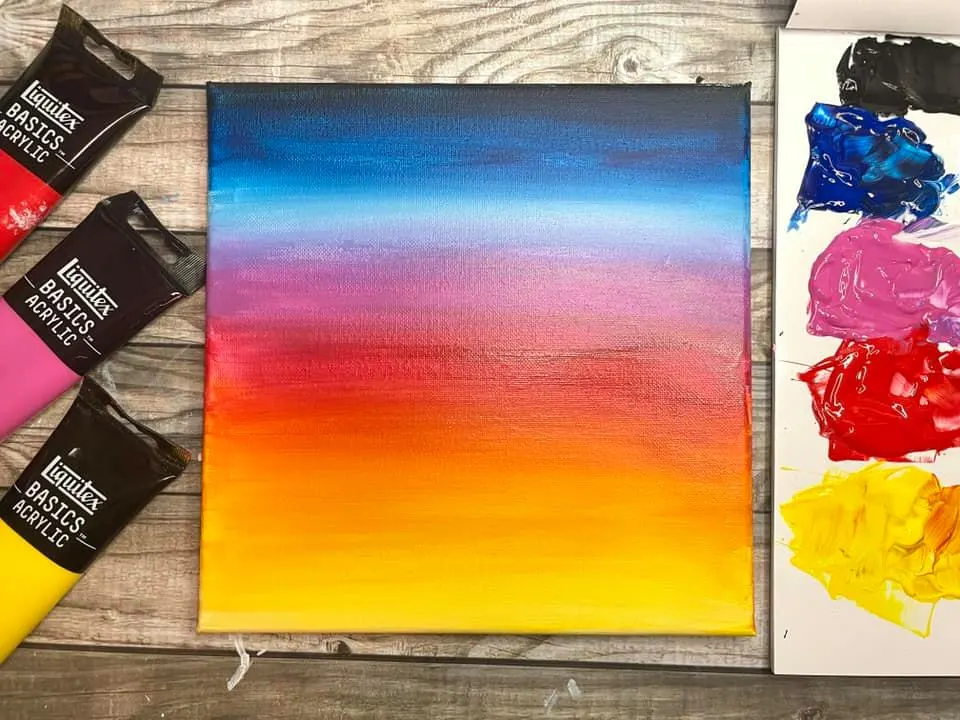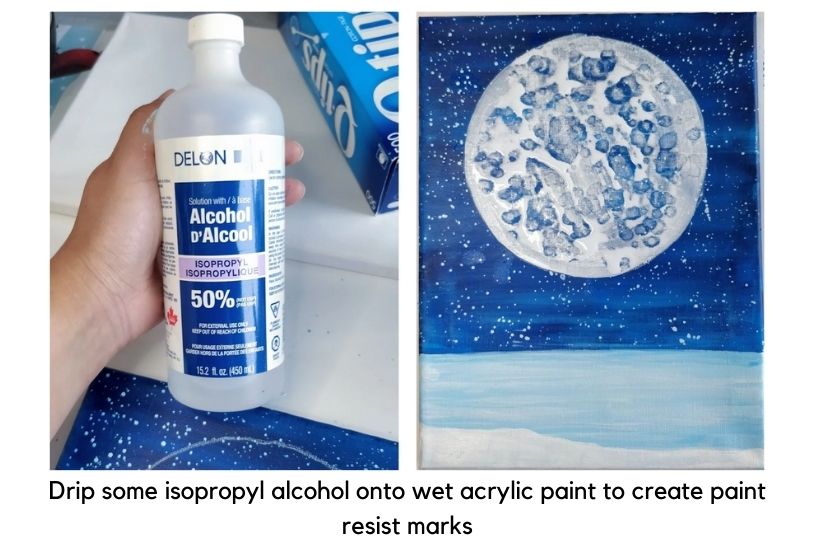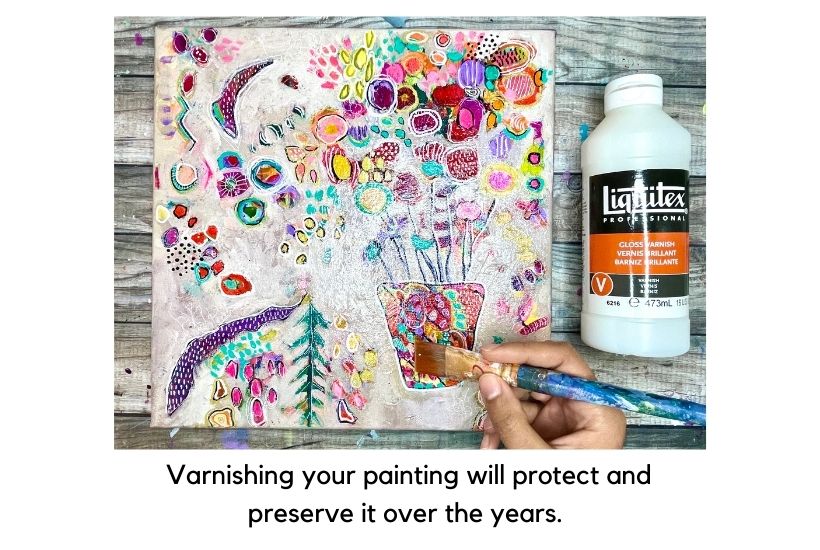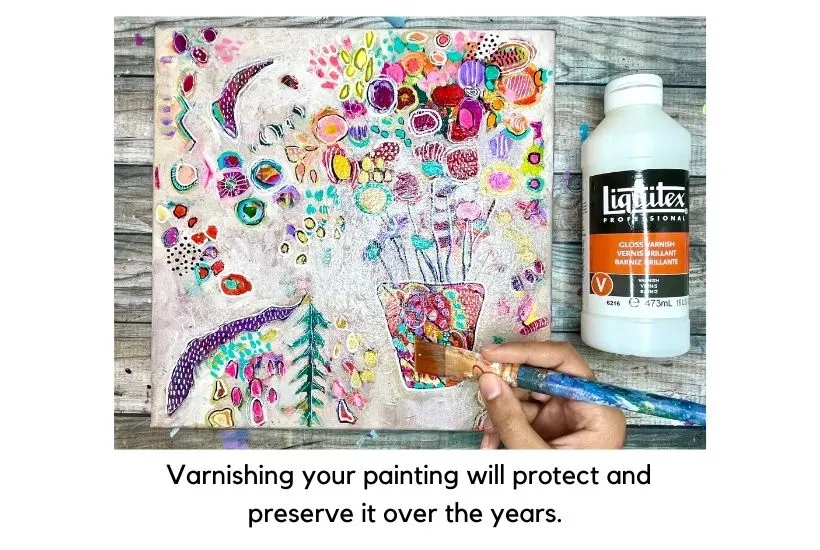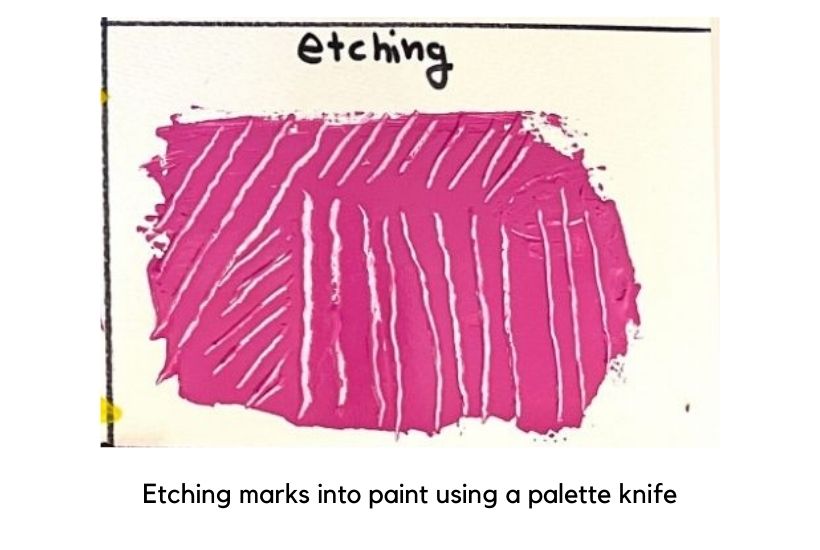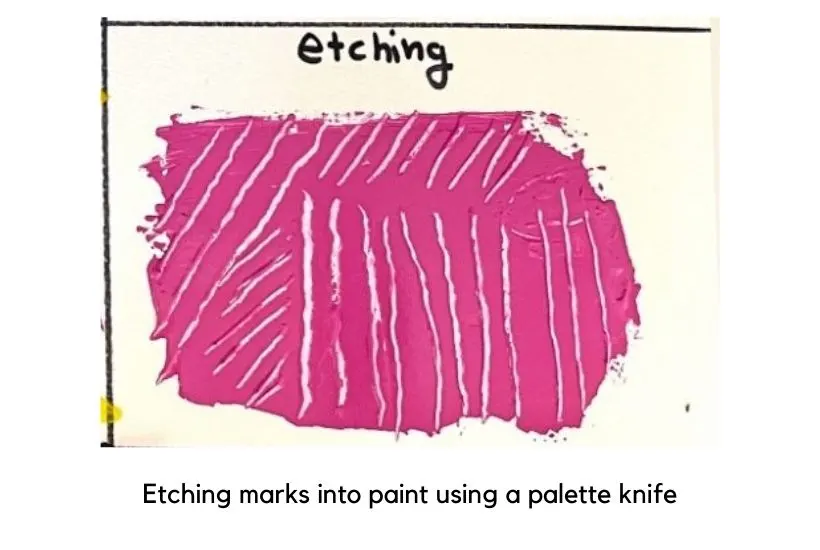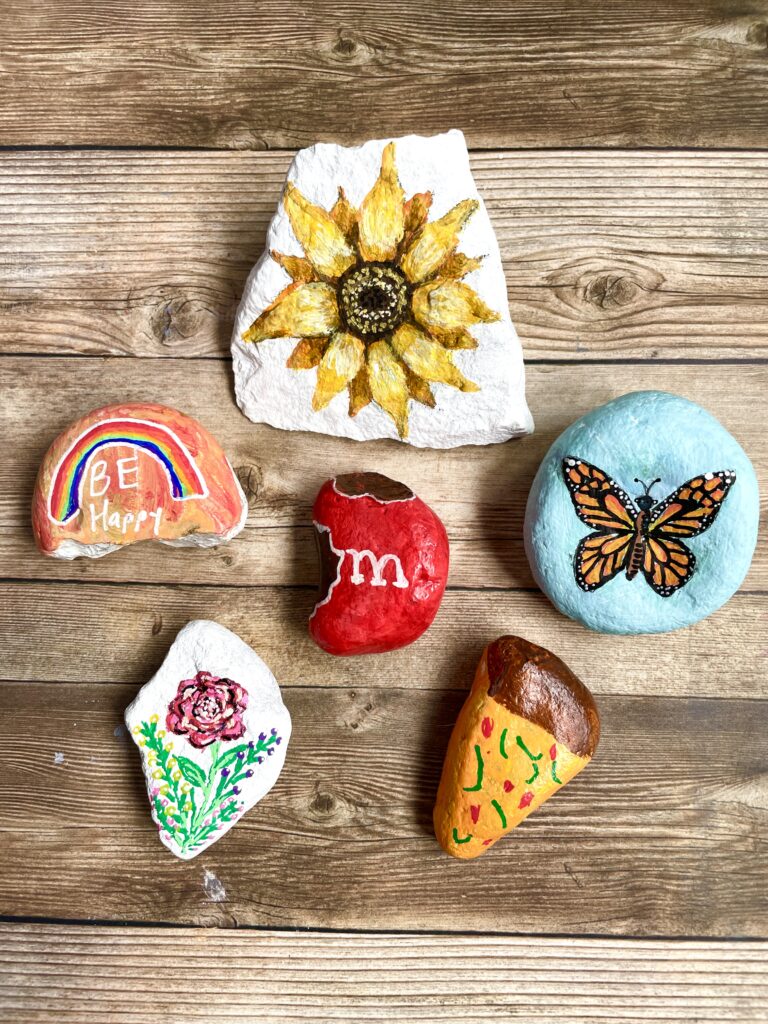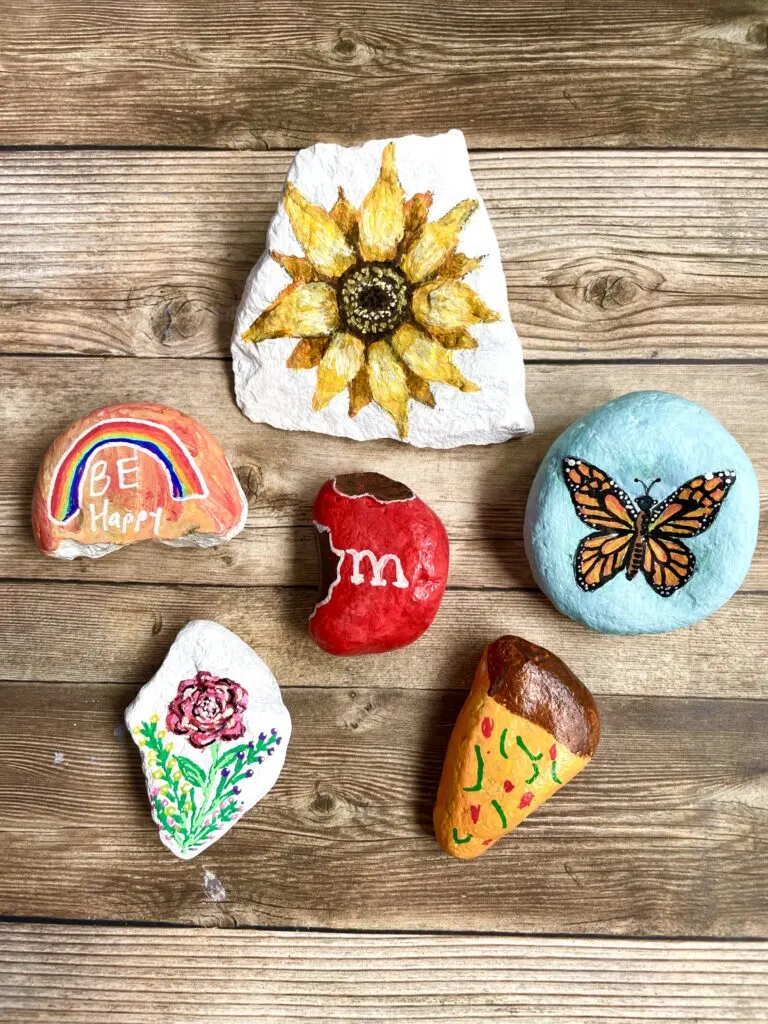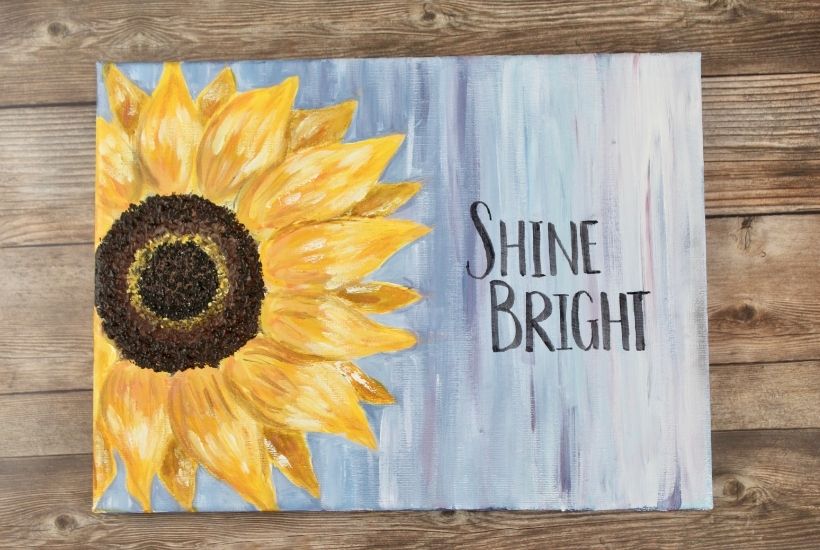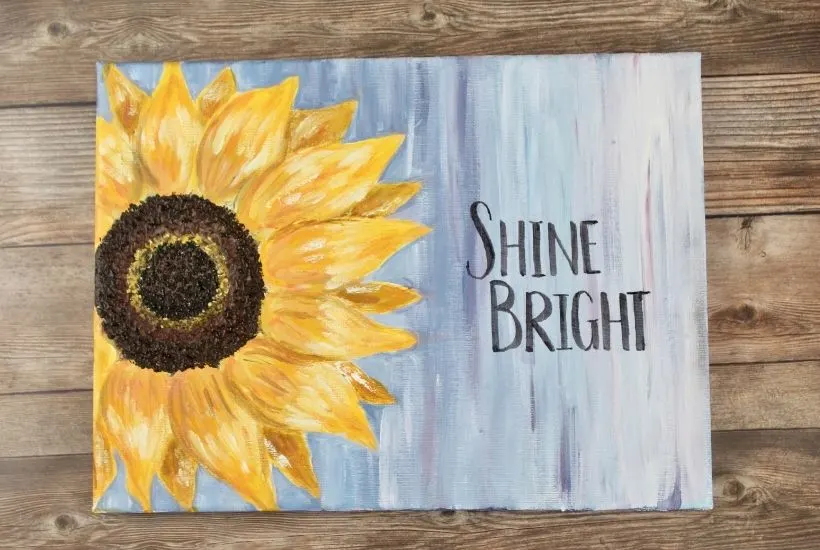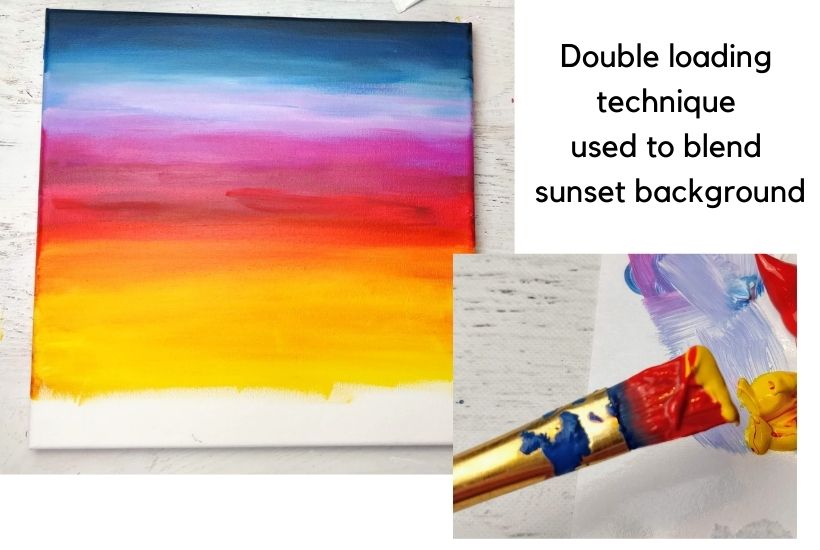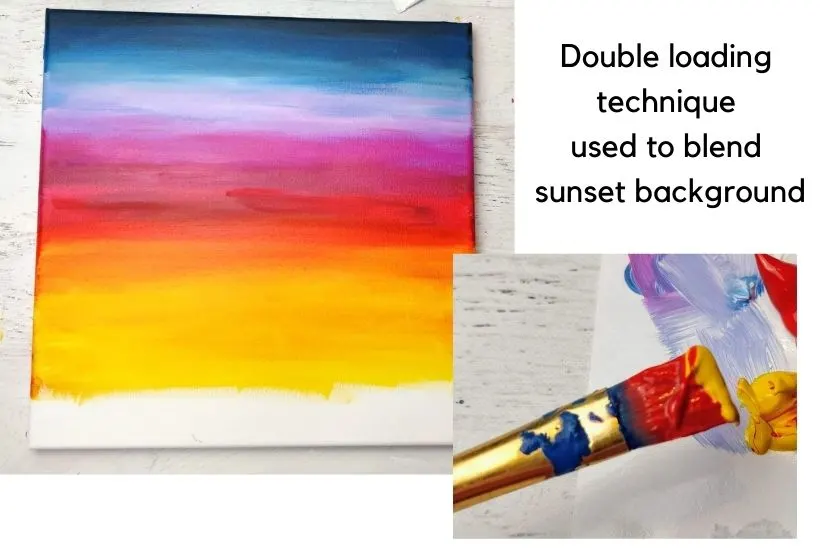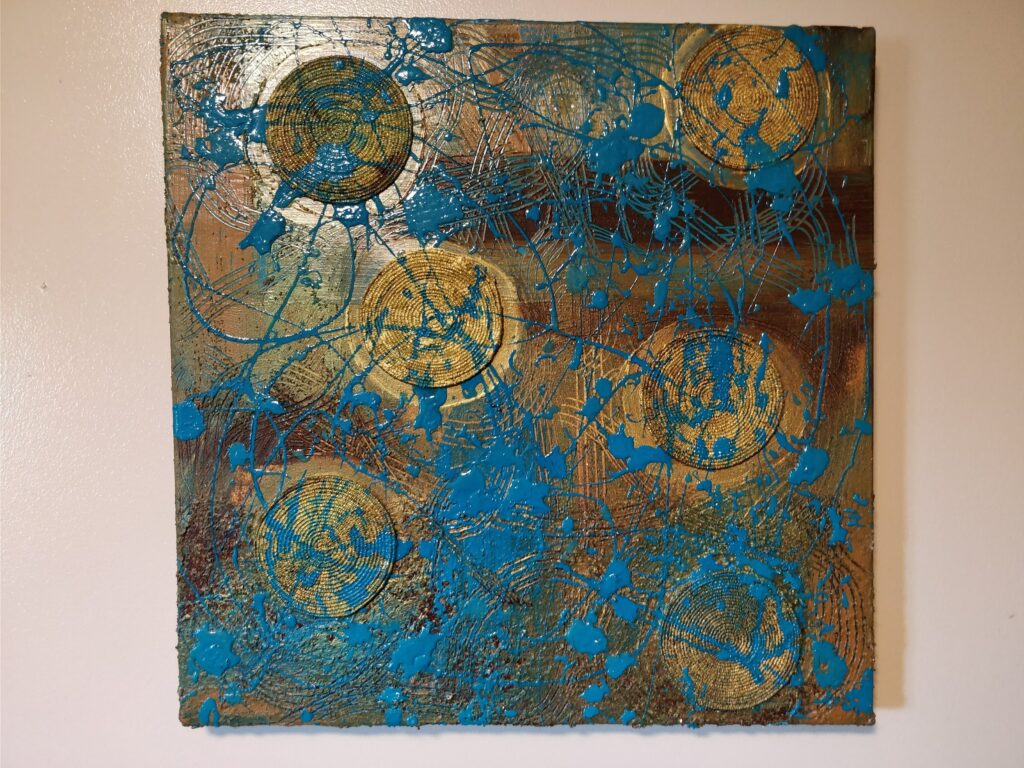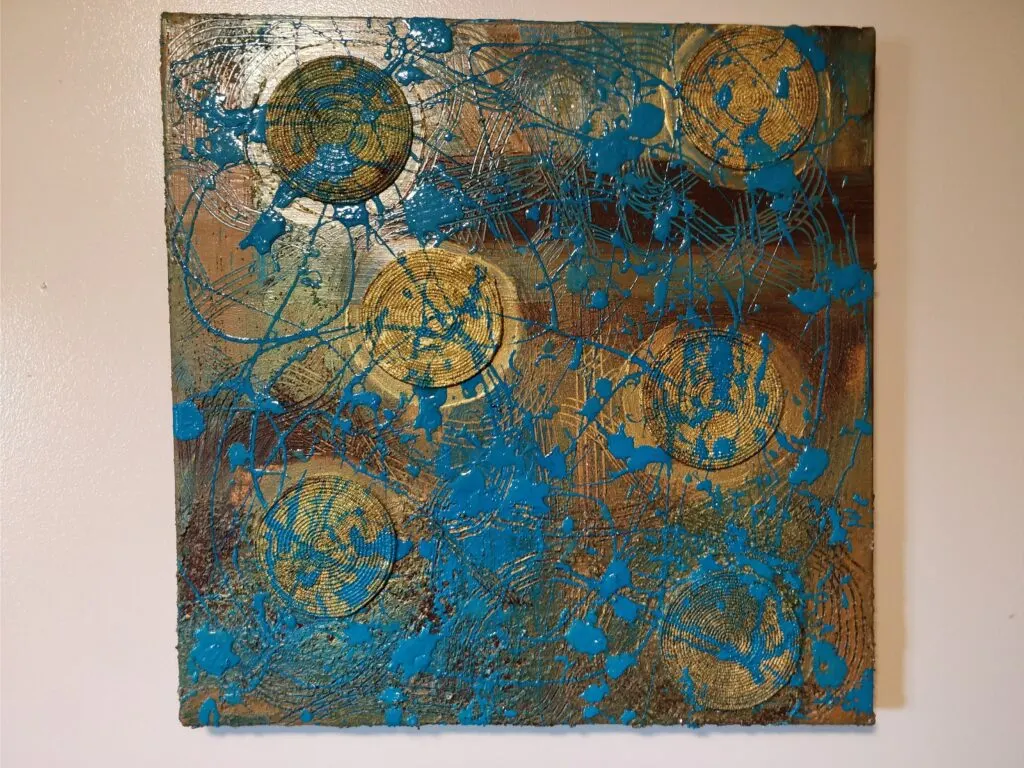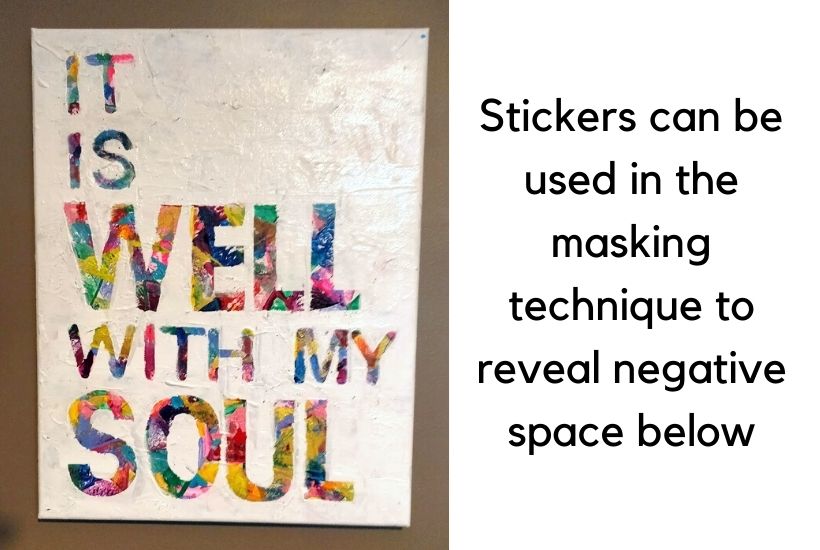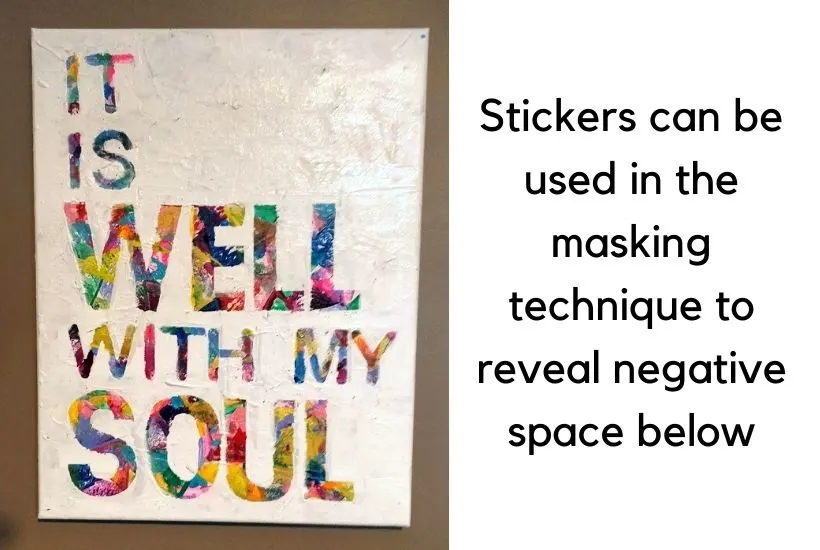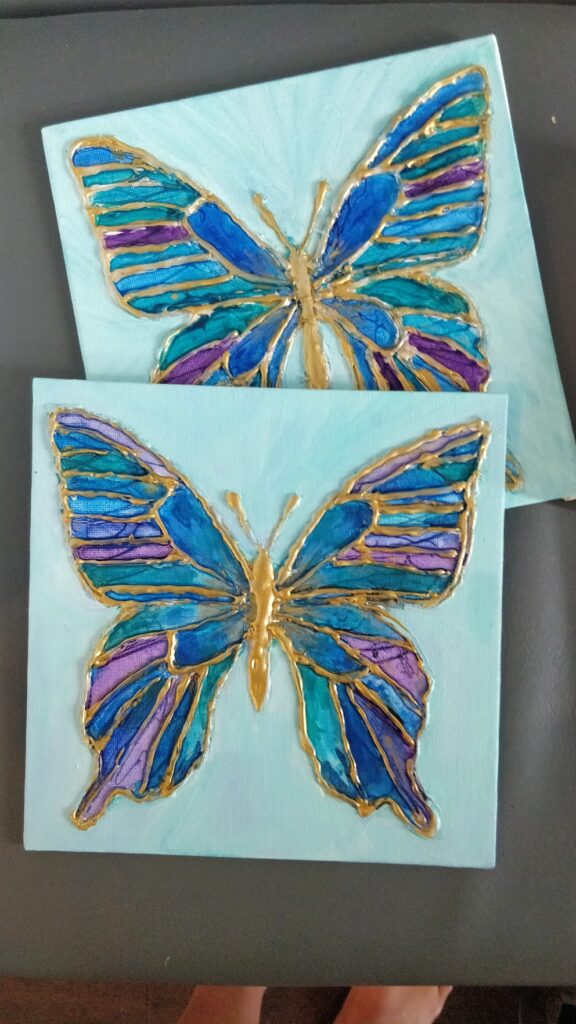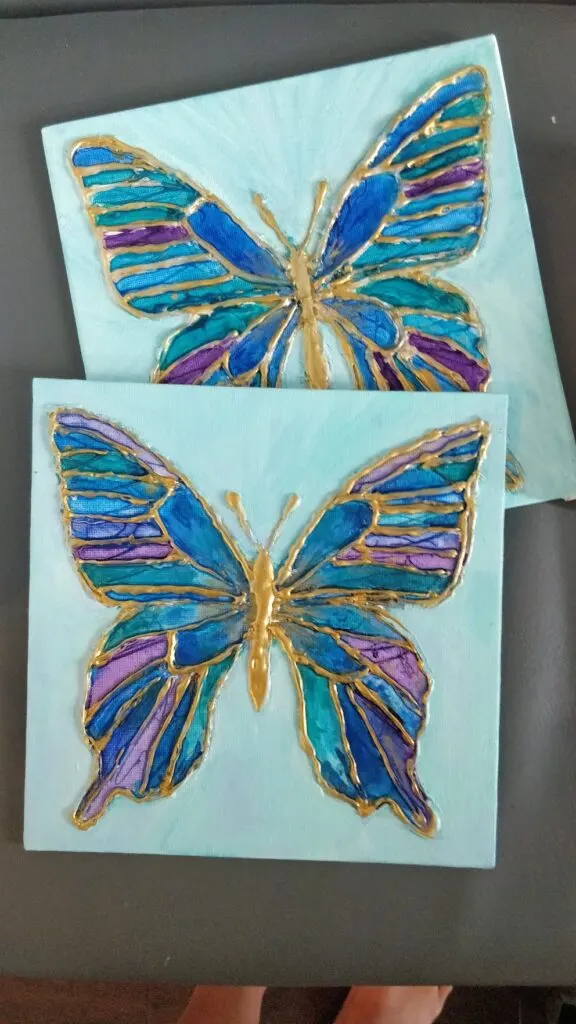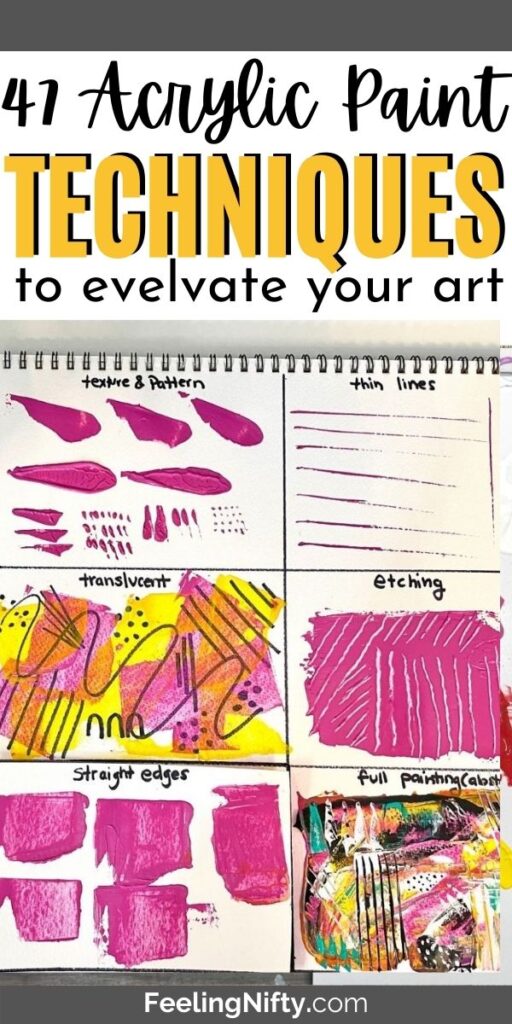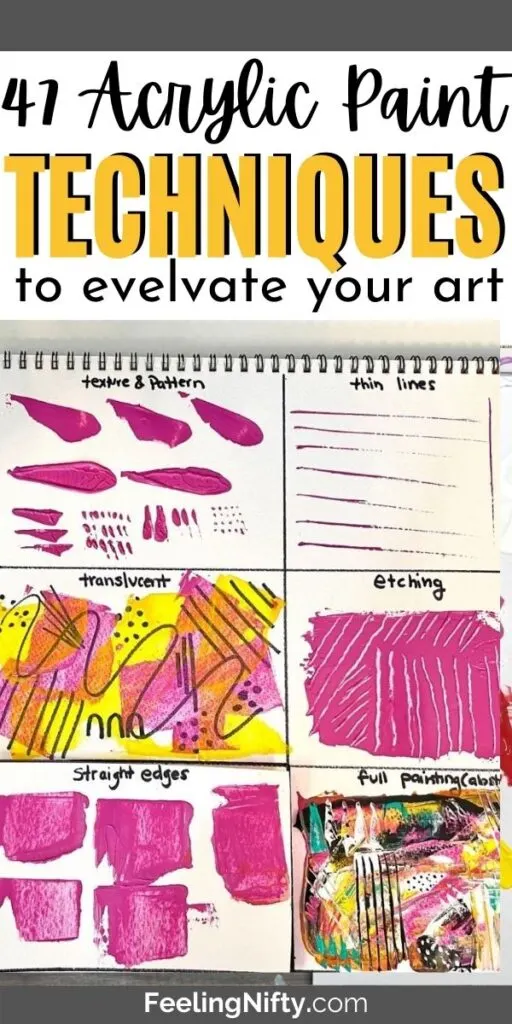Looking for some acrylic painting techniques that will elevate your art?
Lets first look at answering some questions.
What is the most common acrylic painting technique?
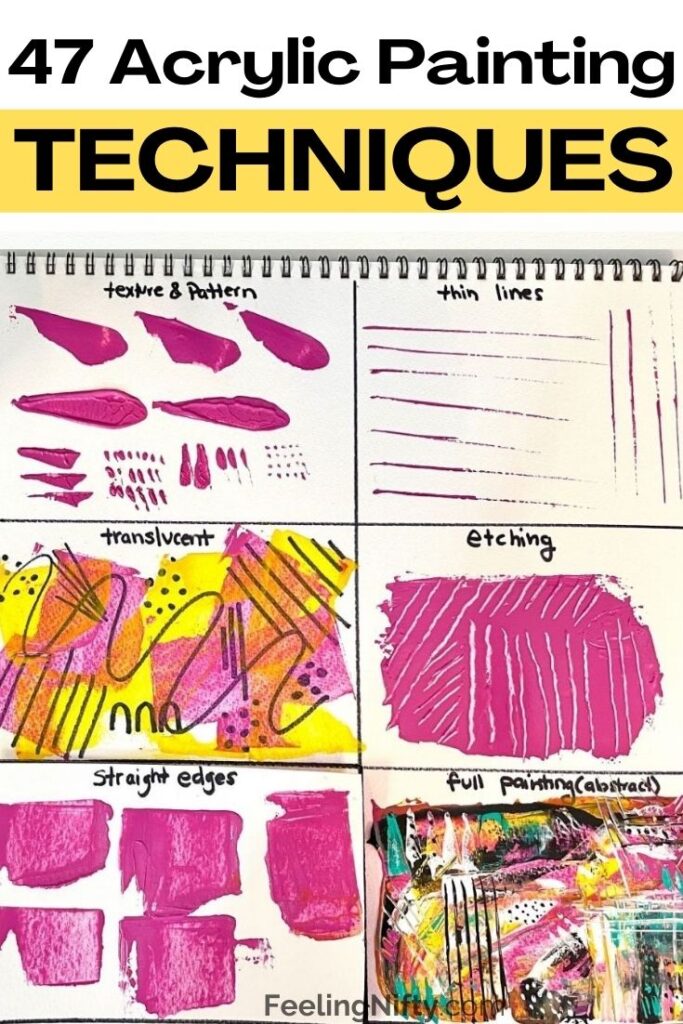
The most common acrylic painting techniques is layering.
The beauty with acrylic paint is that it dries fairly fast (unlike oil paints).
This method can give depth and richness to your painting.
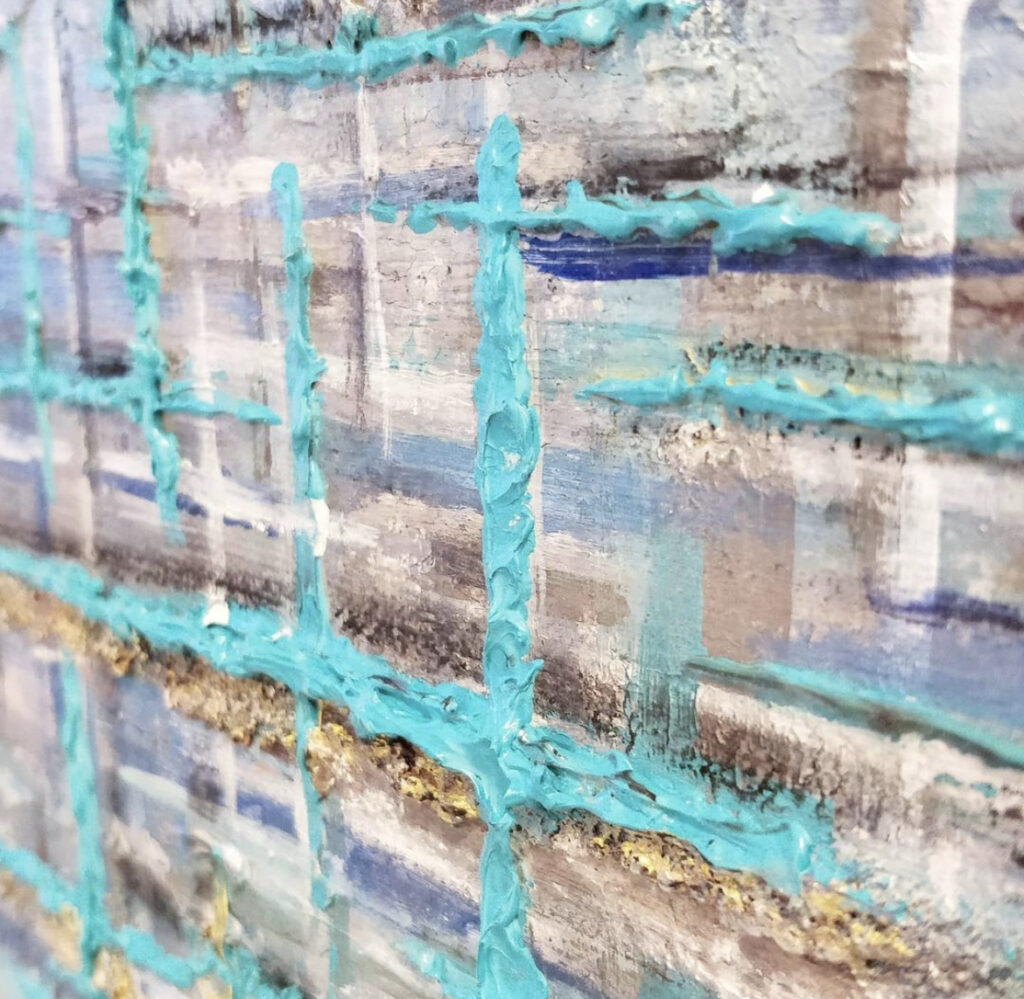
If youre painting with thick paint/ heavy body paint then itll take a long time to dry.
Do you wet the brush before using acrylic paint?
The exception to the rule is when using a dry brush method (below).

The method I use is to dip the brush in water, is in a simple 4 step process.
This list can also serve as an inspiration, to give you new painting ideas and techniques to try.
Layering is the most common and basic acrylic painting techniques.
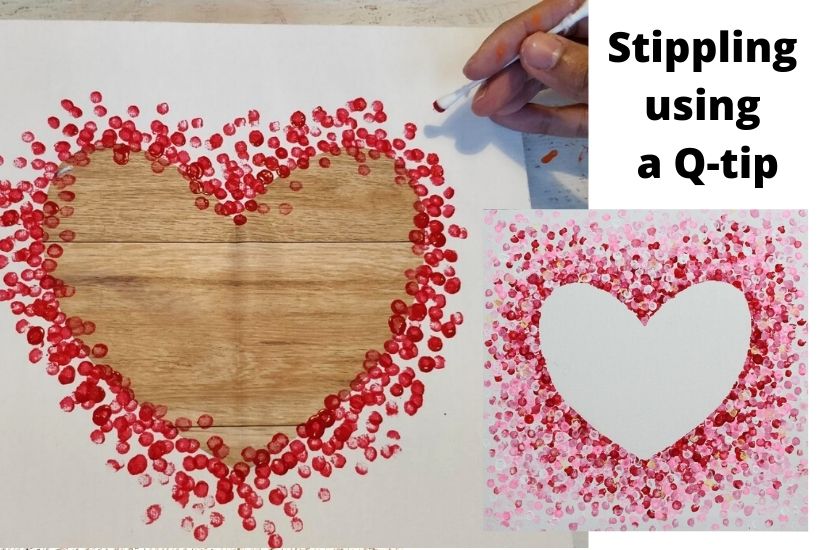
Painting in layers can elevate your painting and add depth/dimension to it.
you’re able to use multiple different techniques as well.
When painting with a thicker paint consistency your brush strokes will be more visible and bolder.

Many acrylic painters also painting with a palette knife (below) when painting impasto.
Stippling is a fundotting technique where you add your paint in dots onto your canvas or surface.
Drip marks is another fun technique you’re able to add into a variety of painting styles.
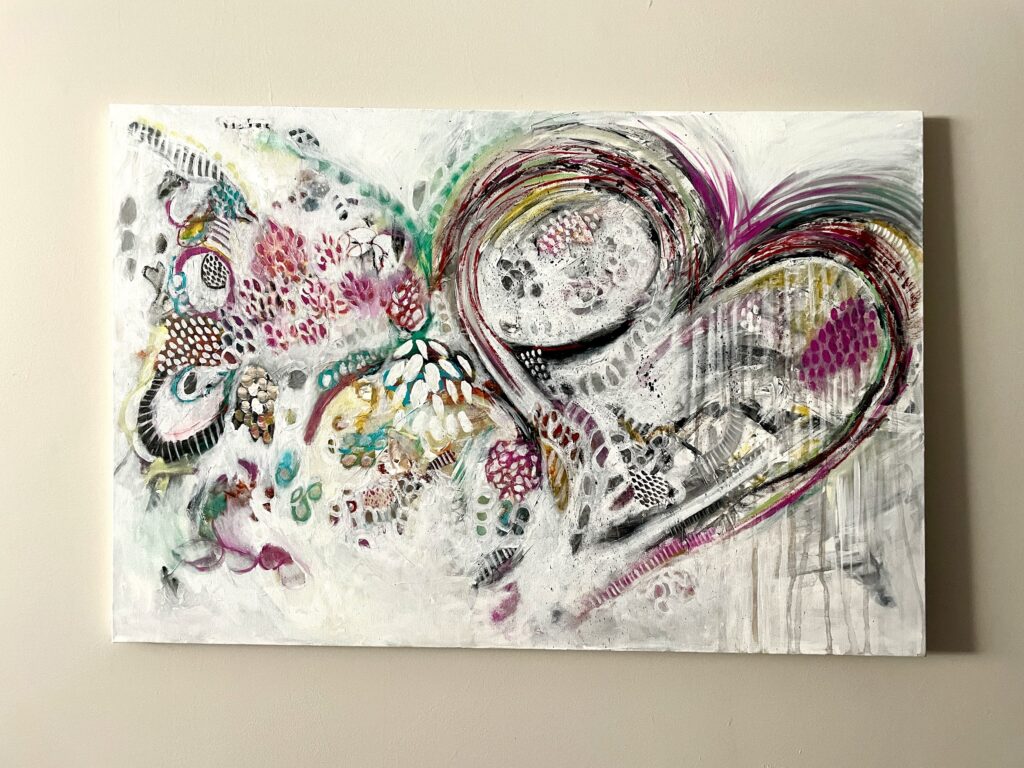
My favorite is to add drip marks into my abstract pieces.
Its a liberating form of expression and a painting process that can set you free as an artist.
Its an enriching style of art that can elevate your artistic journey.
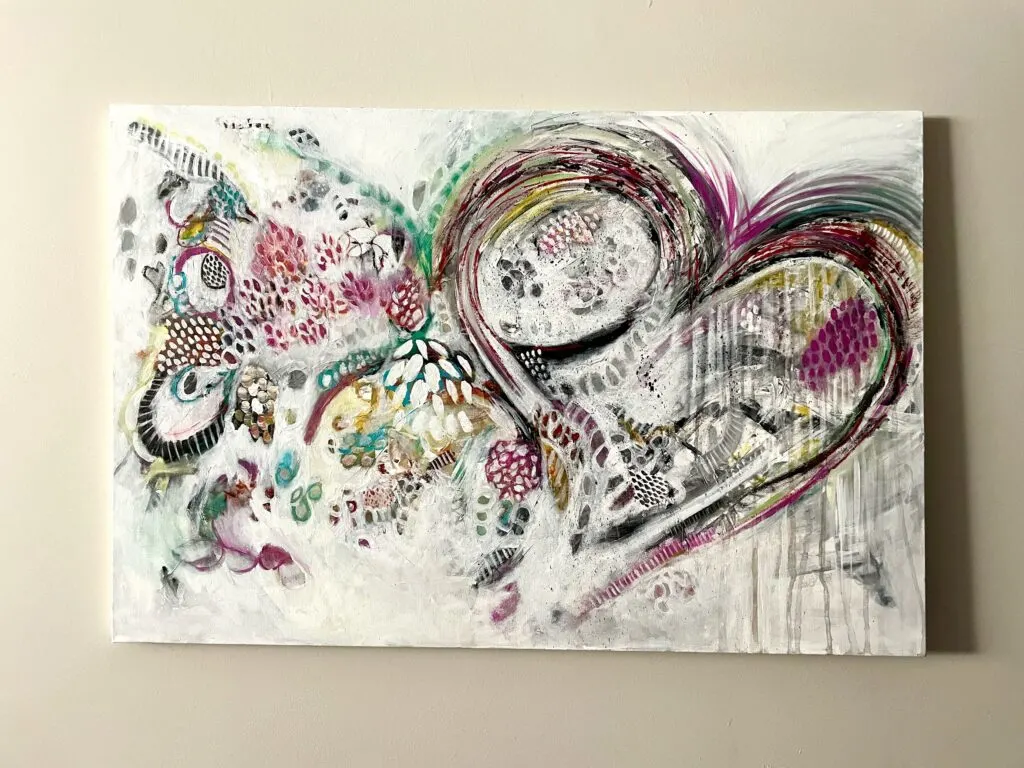
There are a variety of styles of abstract art.
My personal fave isintuitional abstract art, which is a lot of fun.
Its a beautiful painting technique that allows your intuition to take the lead.
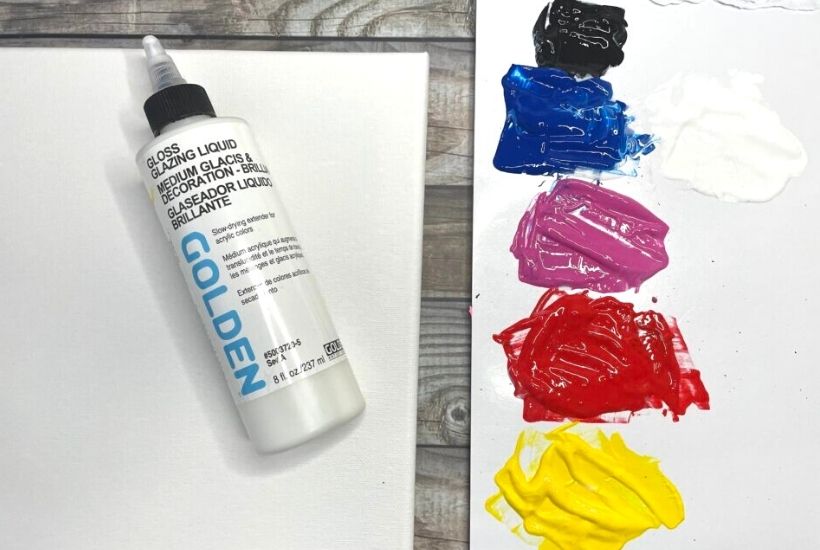
With this technique you dont need a wet brush in water before you pick up paint with it.
This allows the brush to make a textured like effect on your canvas.
As mentioned above palette knives are a great tool to use with thicker paint consistency.
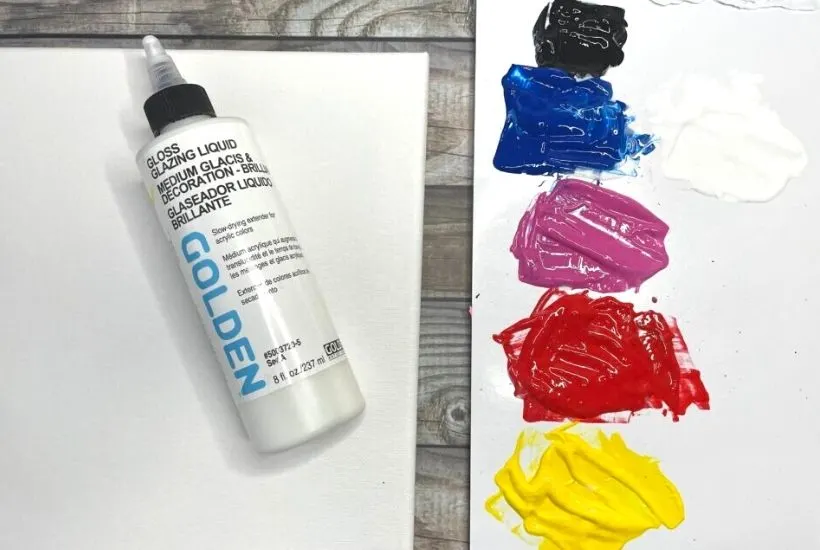
Think of it like icing a cupcake!
Some acrylic artists even use a palette knife for their entire painting!
Palette knives are also used to mix paints on your palette.
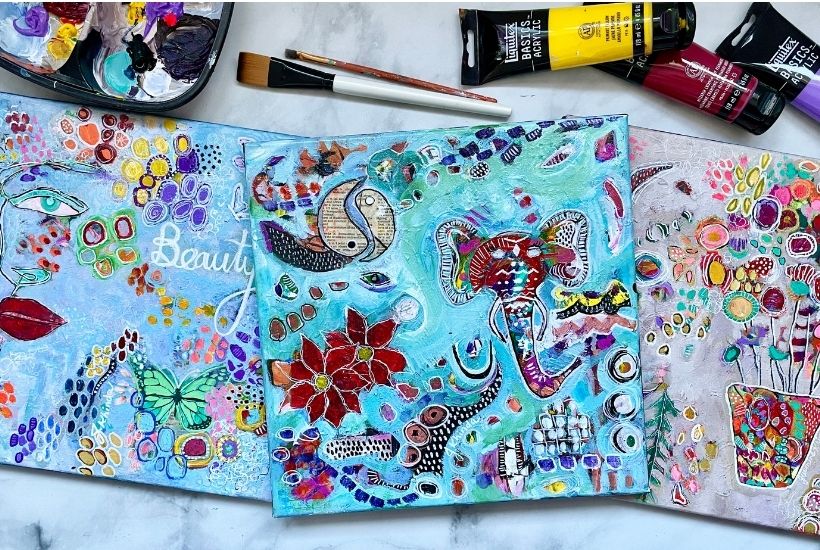
Adding textures into your art can transform your painting and create interest.
Some popular mediums are pumice medium that gives a sand like texture.
you’re able to check out thispaint mediumspost for more texture ideas (including DIY textures) .
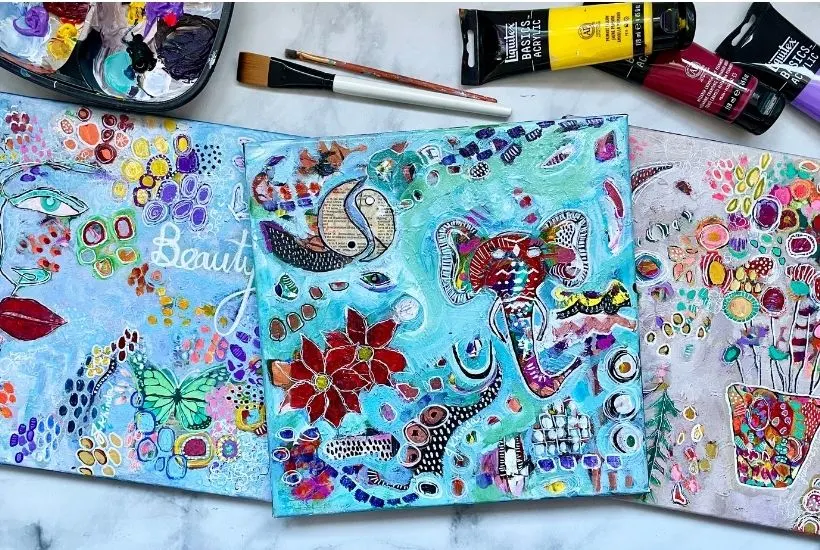
Acrylic inks is a fluid version of acrylic paints, while being highly saturated in color.
In the painting below acrylic ink was used to create the blue drip marks.
From mark making in abstract art to paint blending work, double loading (below) and beyond.
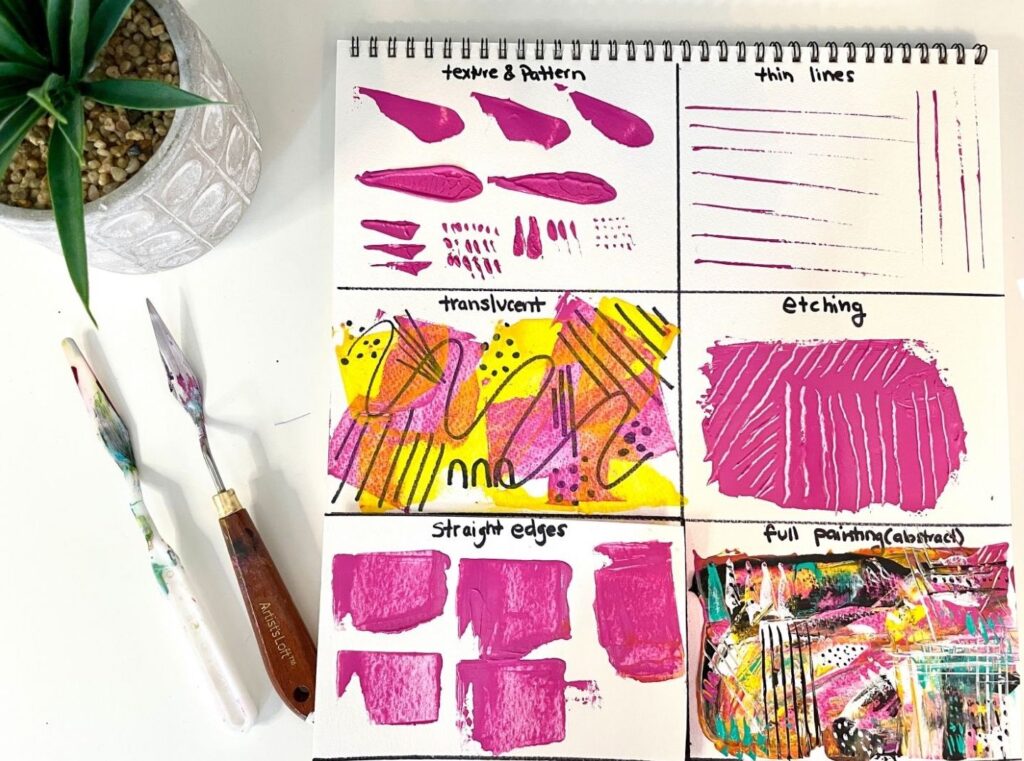
Some examples of the most common brushes are flat, round, fan and the filbert brush.
I love using this technique for creating stars in a night sky scene.
To achieve the splatters youll need to thin down the paint until its a liquid consistency.
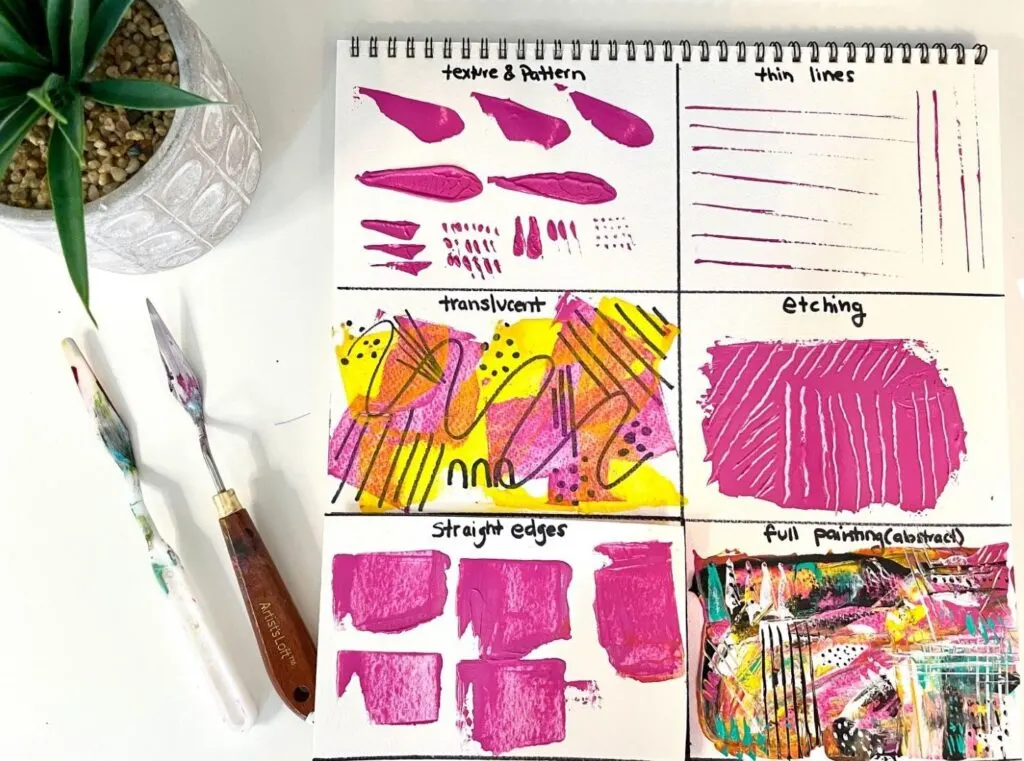
Splatter the paint across the canvas.
Blending work with a sponge is ideal for beginners.
I find using a sponge is much easier to make seamless blends, compared to a brush.

you might use any jot down of sponge or you might buy speciality artist sponges in the painting section.
you could also clean off your sponge between colors to ensure purity of blends.
This is especially true if youre working with heavy bodied acrylics.

Find out more onhow to thin down your acrylic paintsin this post.
You canwatch this videofor more tips on how to creating beautiful blends and gradients.
Working with fluid acrylics is another technique that you might use to create pour paintings.

Glazing is an acrylic painting technique where you apply thin layers of paint over existing layers.
Then you’re free to apply the glaze.
When it dries, it adds depth and richness to the paint colors.
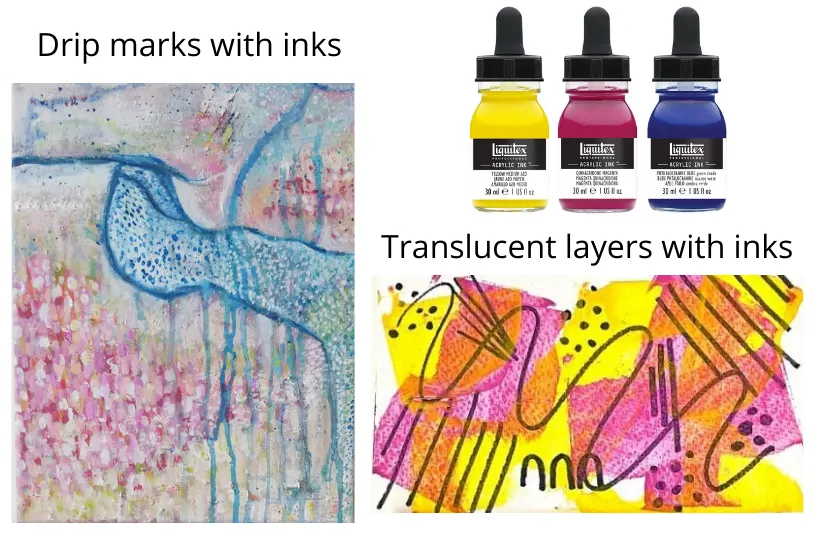
It also helps unify the painting when applied to the entire painting or large areas.
Using white paint as a final highlight in your painting can bring your painting to life.
Usually the highlighting is done at the very end of the painting process.
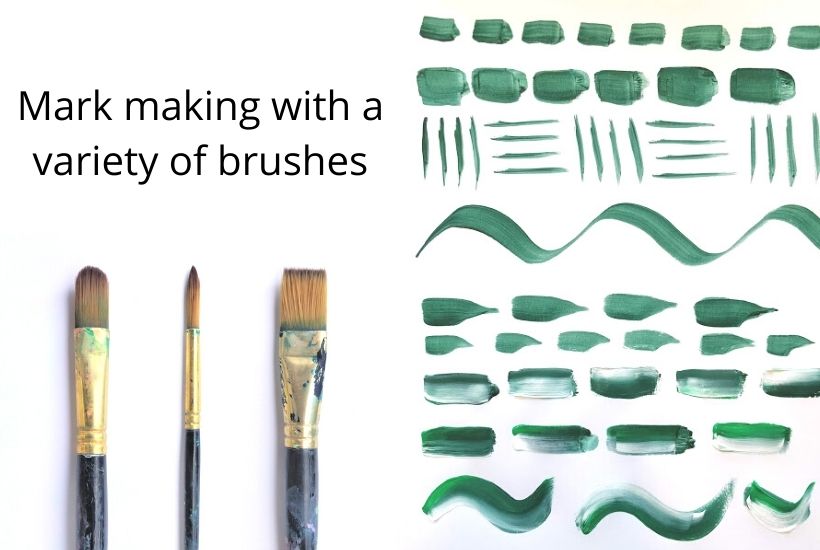
Its also added to the center of her tail to show the light reflection and create dimension.
When you thin down your acrylics enough with water/glazing liquid into a thin water like consistency it becomes transparent.
So any paint or marks below will show through.
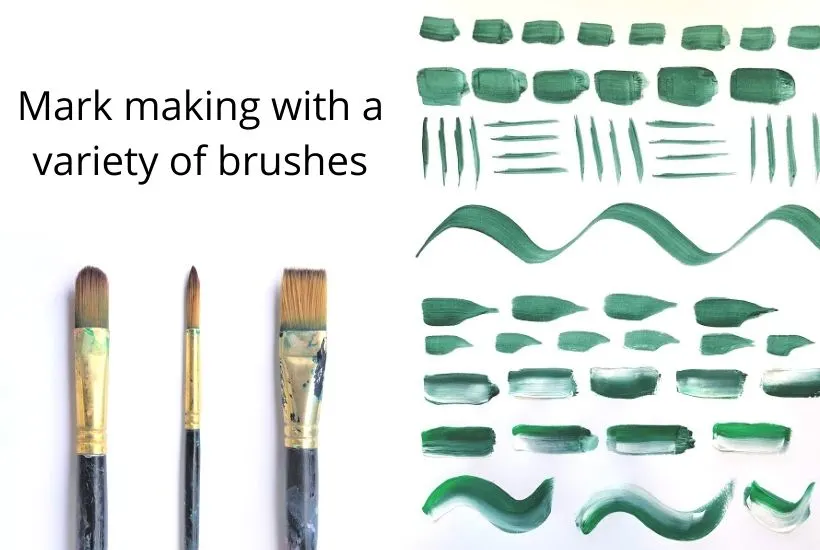
Gel pens are a great addition to your acrylic painting toolkit.
They come in a variety of colors and tip sizes.
you’re able to use the gel pens in any layer of your acrylic painting.
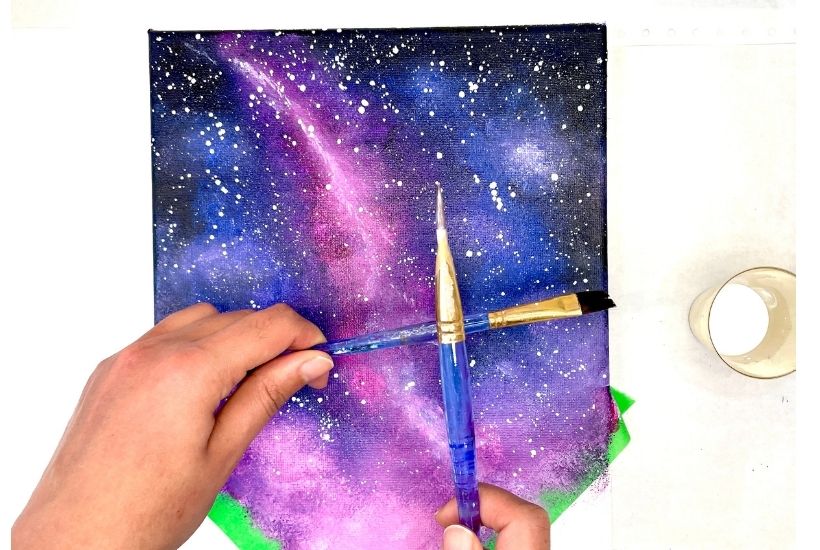
I find hand dexterity is much easier with paint markers versus a brush.
check that you read the label to ensure they are water-based and will work with acrylics.
The Posca brand is very popular with acrylic artists.
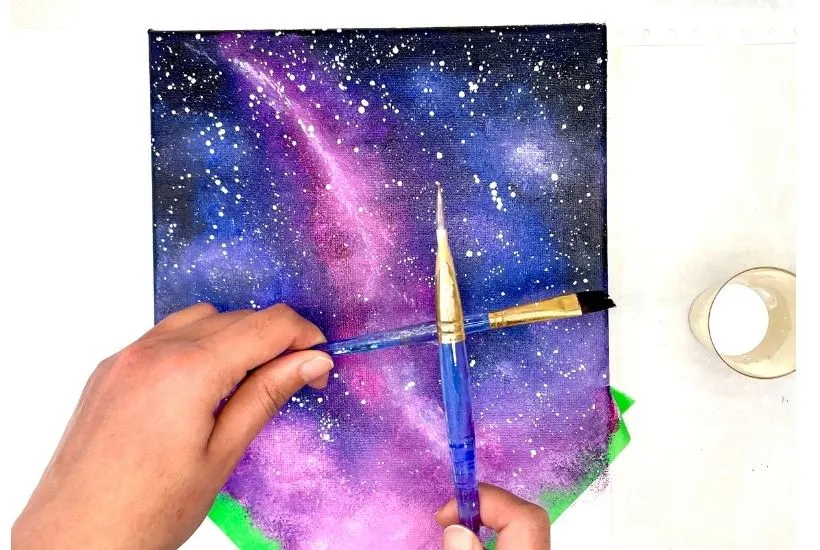
Paint markers can be used in any layer of your painting.
Color mixing is an important skill and technique to practice even as a beginner artist.
Understanding the basics ofcolor theorywill help you know which colors to mix to create your target color.
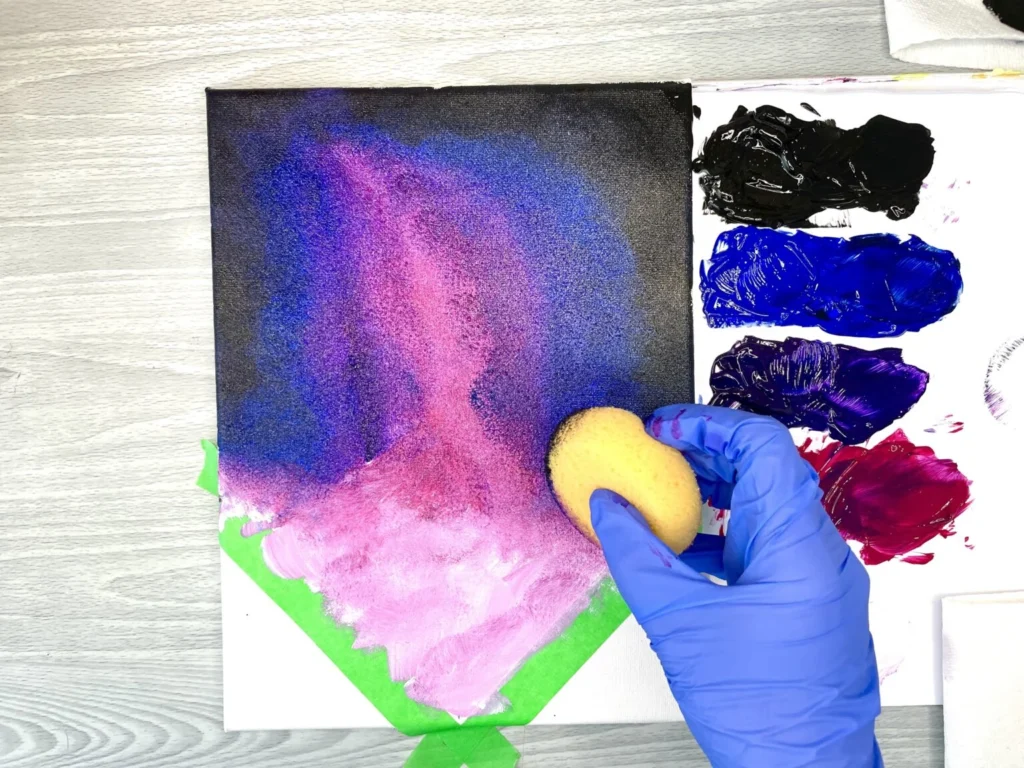
A great way to learn this skill is to create acolor chart.
Blending acrylic paints can help you achieve some beautiful gradients and realistic details into your art work.
It can also help achieve smooth transitions between different colors.
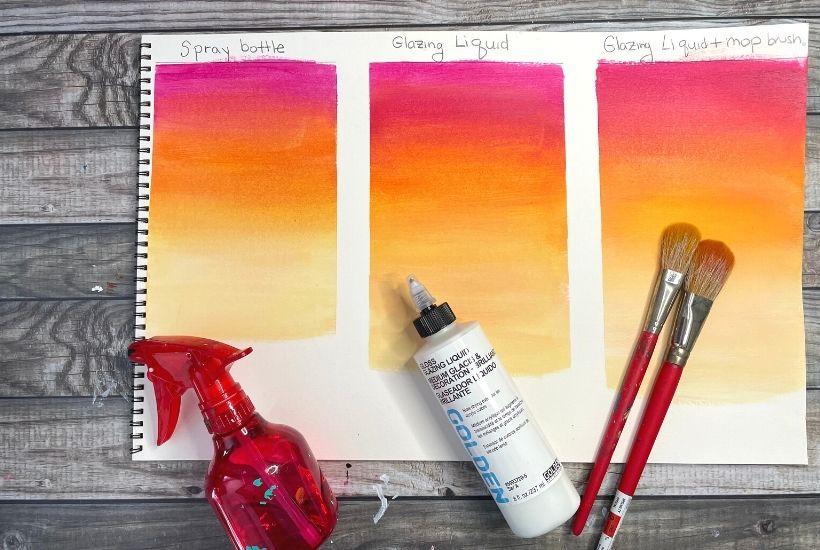
So in the end youll have 3 paint colors that are equal in size (each 1/3).
The moreyou go over the wet paint, the more it will smooth out.
Also ensure the paint thickness is thinner rather than heavy bodied paints.

Underpainting is another technique that allows your end painting to have more dimension and depth.
In a nutshell paint values are the light and dark areas of the painting.
In the painting below the flowers were painting with simple finger dabs of paint.
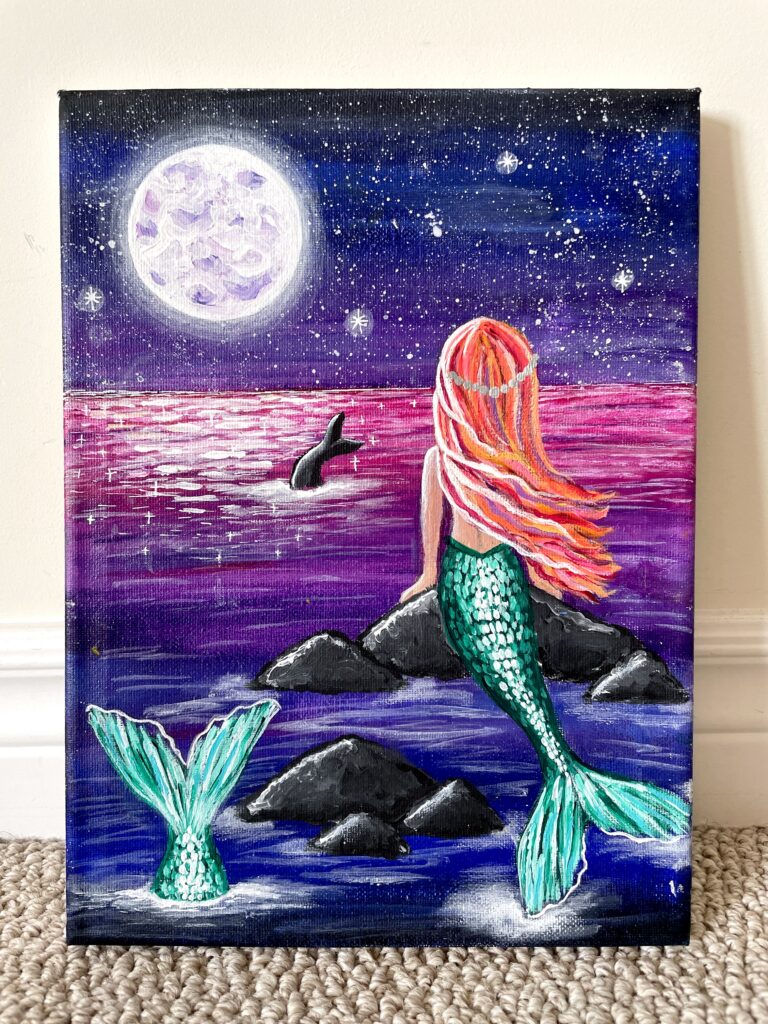
Stamping is another way to achieve some beautiful marks and patterns in your art work.
In the picture below I created some beautiful red roses using the bottoms of bok choy.
This technique is used for blending work.

So you have more time to work the paints and blends.
Create some nifty acrylic paint resist marks by dripping some isopropyl alcohol over wet acrylic paint.
you could learn more about this method is thisChristmas tree paintingtutorial.
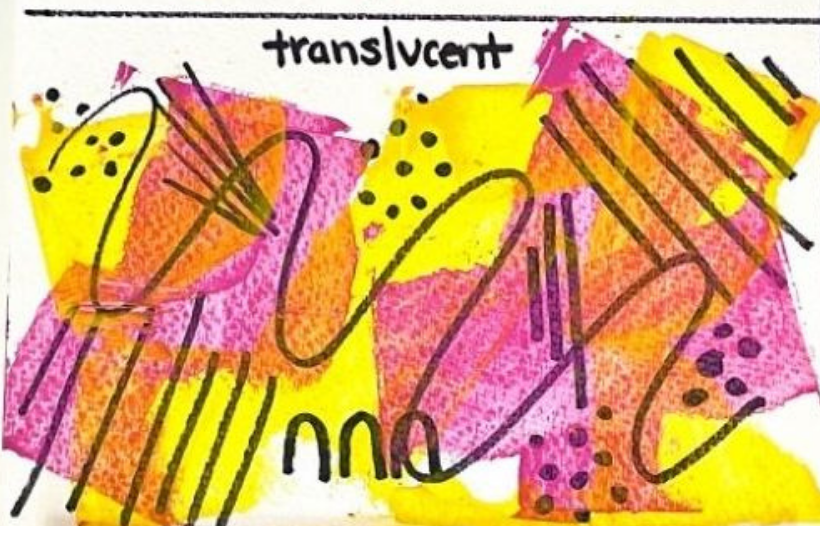
If youre interested in learning styled abstract art you’re free to check out this course.
You canwatch this videofor step by step instructions on how to varnish your painting.
Etching/Sgraffitois a fun acrylic painting technique that you might use to add texture and interest into you art.
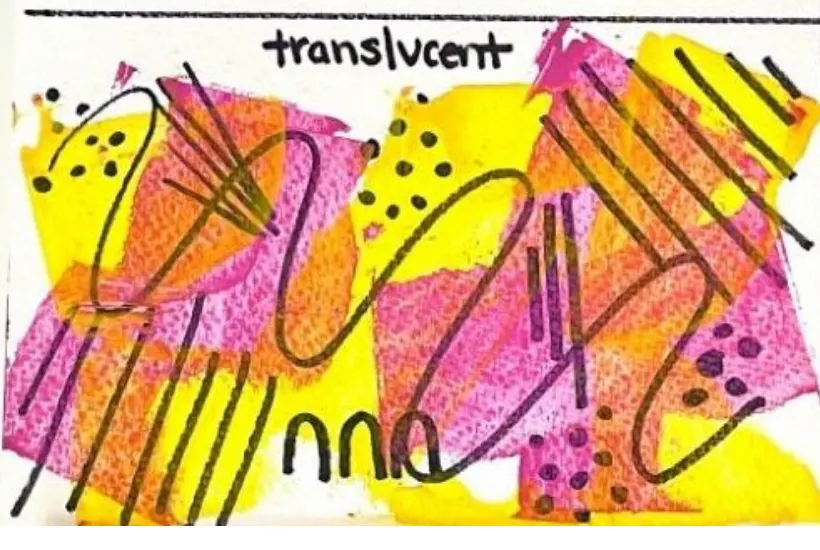
Instead of painting on canvas you canpaint on a rock!
The great thing about acrylic paints is that it adheres to many different surfaces.
Pick a rock that calls out to you in terms of shape for inspiration.

you’re able to use the same acrylic paints you use on your canvas on rocks.
Youll also only need a small amount of paint compared to canvas, since rocks are smaller.
Having a properly gessoed canvas will help your paint slide smoothly across it.
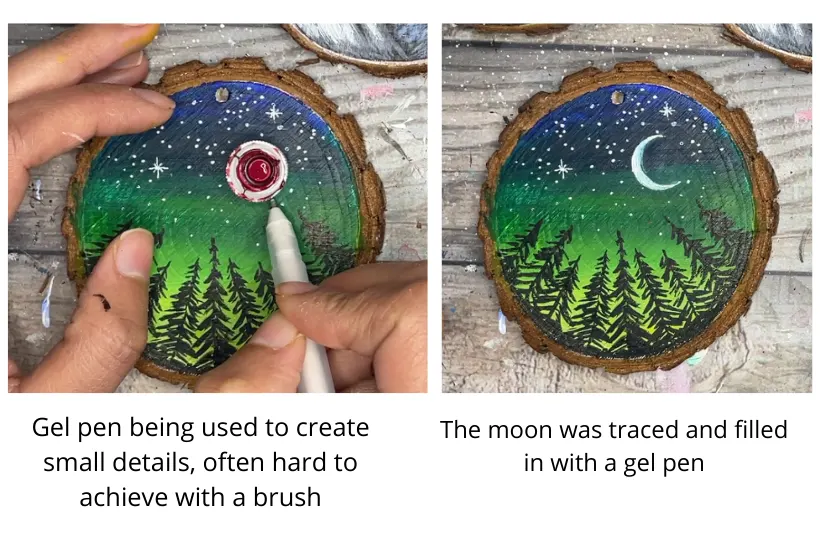
Although many canvases come pre-repimed with gesso, some are not.
Simply buy a bottle of gesso, apply it to your canvas and leave to dry.
Once dried you’re able to paint overtop with acrylics.
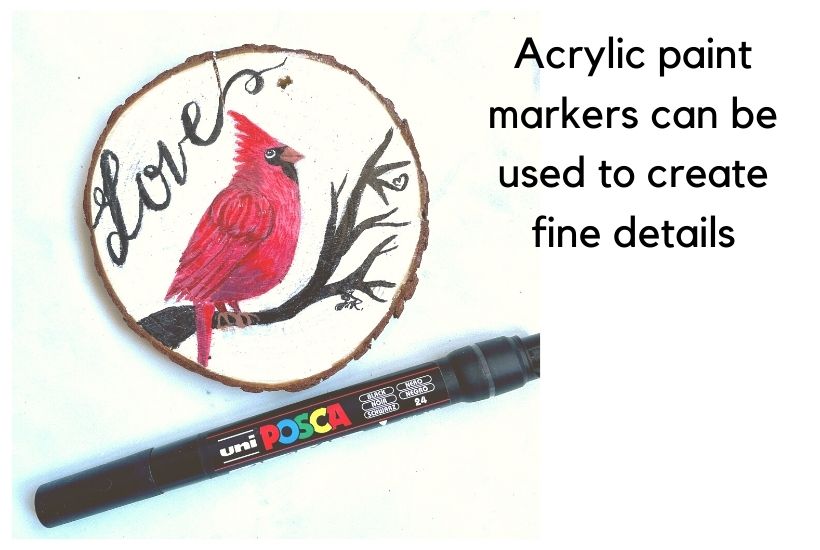
In this technique you are applying the paint on a dry canvas.
Youll still want to wet your brush before picking up paint.
you might use this technique to apply your underpainting, or background into your painting.
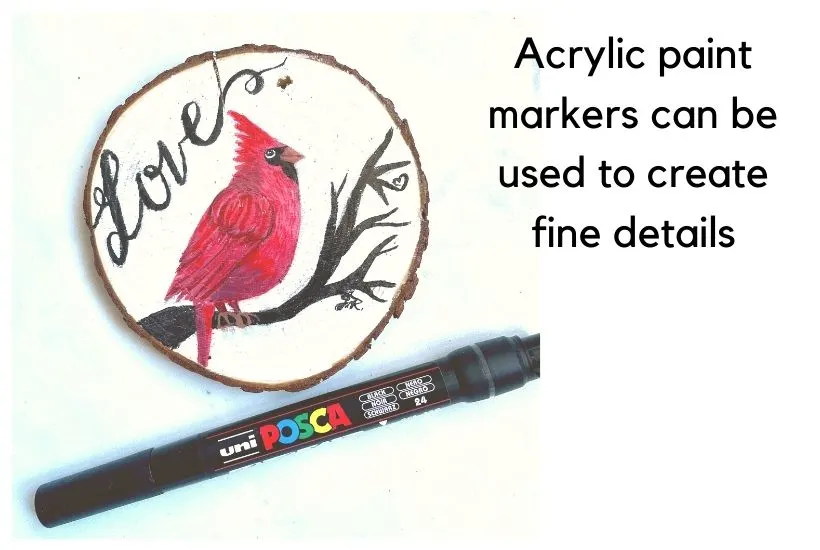
Use it to add uniformity to the piece by adding a thin glaze overtop the dried painting.
This can help with blending work between colors and soften their edges.
Blending paint colors right on canvas through wet on wet techniques can help create some very smooth blends/gradients.
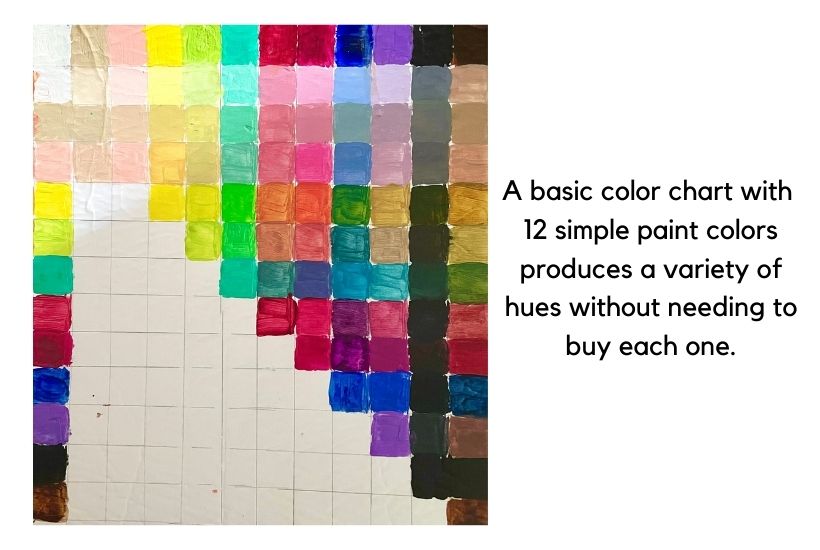
you might also use it to create textures in your painting.
The benefit of this is youll create depth in your painting.
The only thing to keep in mind is to attempt to balance the ratios of each color.
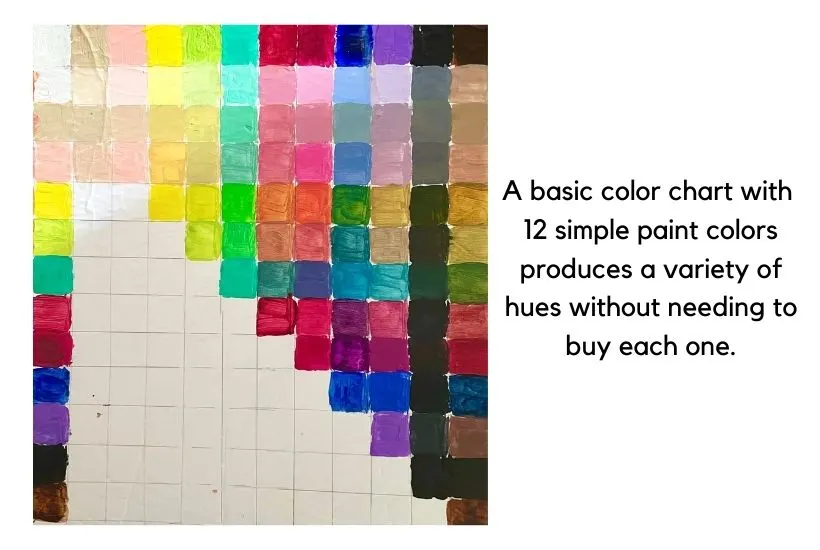
This will bring more balance and harmony to your painting.
Below I used a yellow-orange (sunflower) with a blue-purple ( background).
Using these two colors side by side brings out either colors vibrancy.
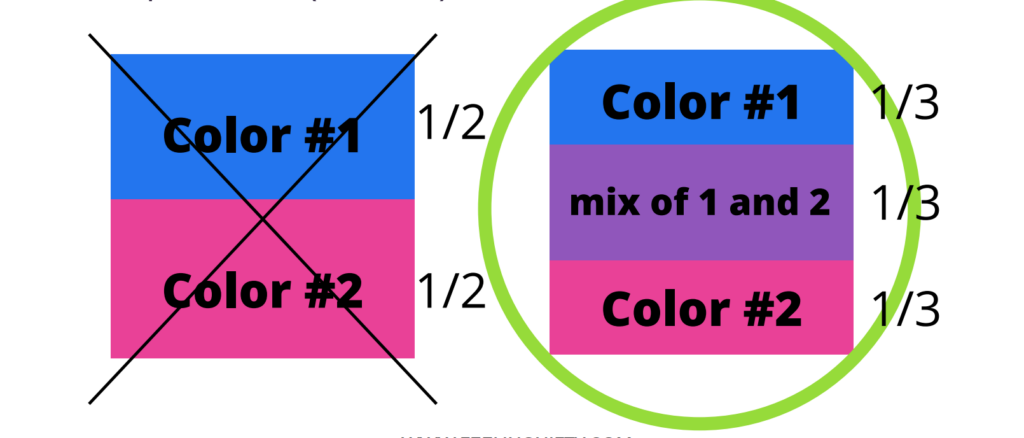
Double loadingis when you have 2 different paint colors on your brush.
This can help with blending work and is also used in one-stroke painting.
I used the double loading method to blend the colors of the sunset background in the painting below.
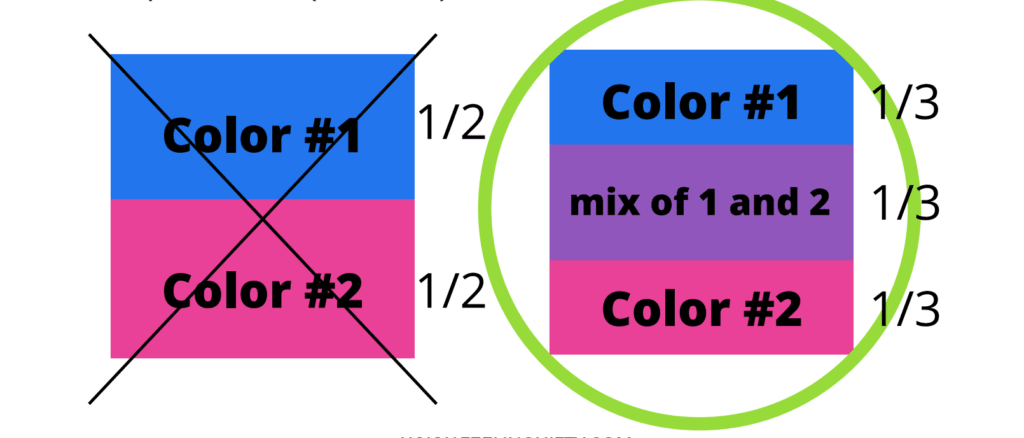
One stroke techniqueis another great technique for beginners to try.
It does require practice but can yield some beautiful results.
In terms of brushes a flat brush works best.
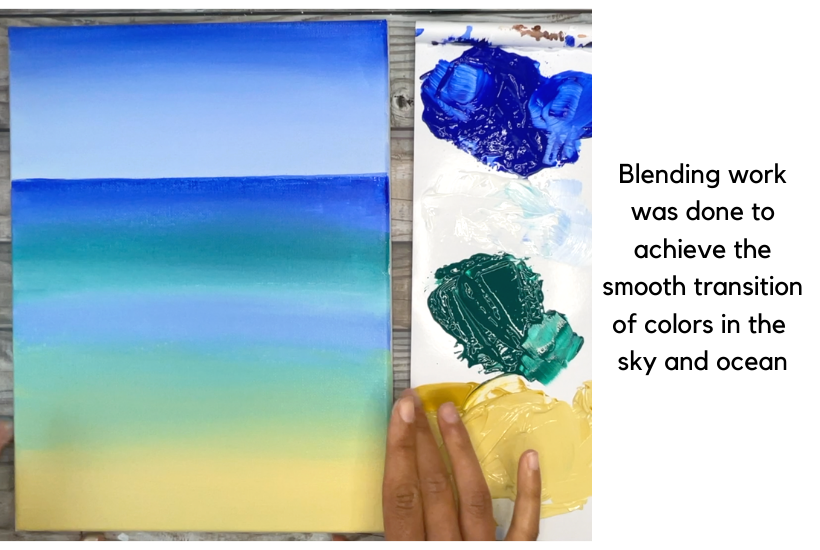
In the painting below I glued on circular coasters on the canvas and used a splatter technique overtop.
Which usually involves a high level of detail.
This is one of the more unusual painting techniques, but can be a fun one to try.
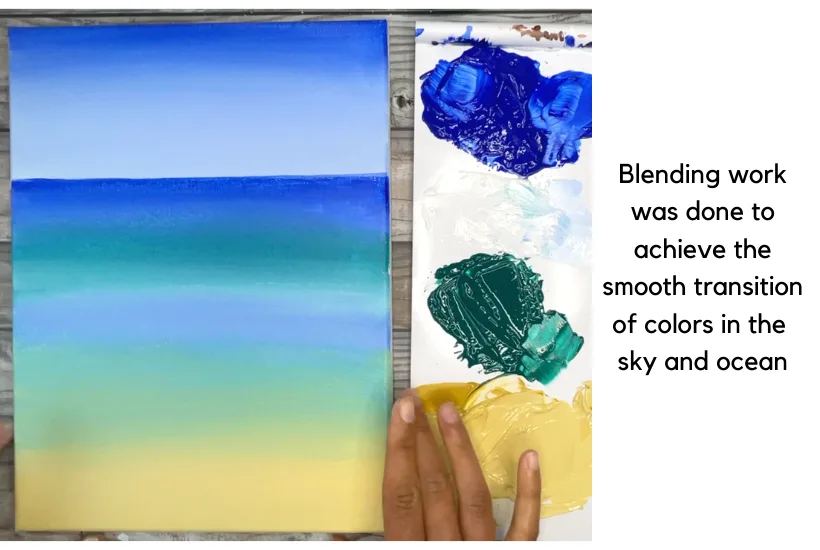
The masking technique is an easy technique for beginners.
It involves placing masking tape or even stickers on the canvas then painting over top the masking tape/stickers.
you’re able to remove the tape/stickers to reveal the negative space, once the paint is dried.
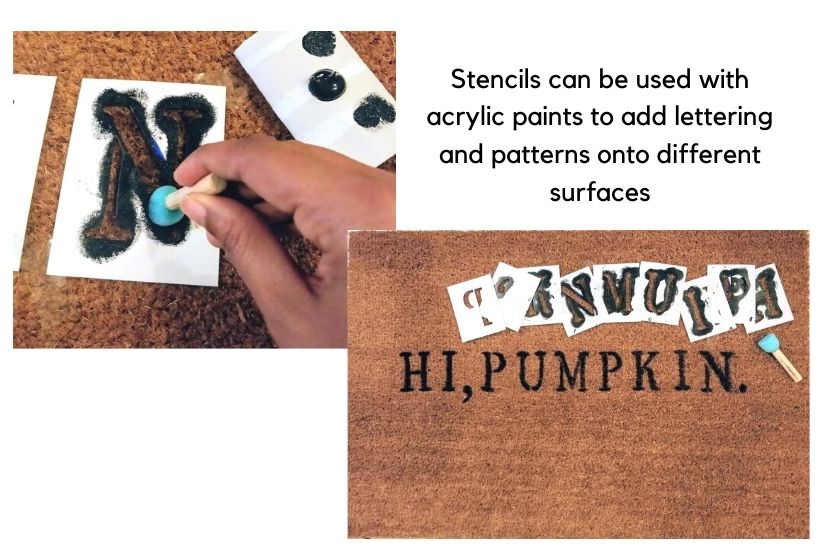
In the painting below I painted a bold and bright background.
I then placed large letter stickers overtop the dried background, then painted simple white paint overtop.
This gives a simple yet dramatic look and is a very easy painting technique that anyone can do.
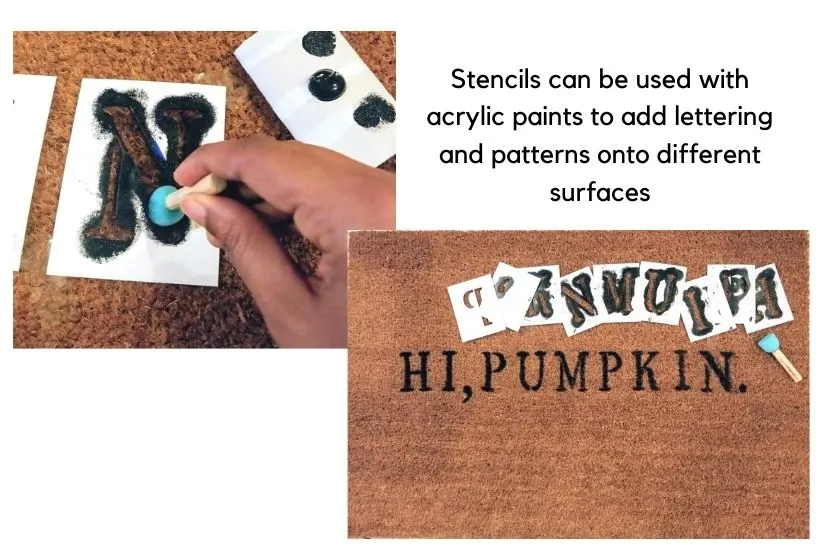
This is anotherunusual painting technique, but can yield some dramatic and easy paintings with fun texture.
For this painting technique, youll need a glue gun.
you could choose to paint a background first and then leave it to dry.

Youll then use your glue gun to trace in a pattern overtop (like the butterfly below).
The results are a highly texturized piece thats also very unique.
If you liked this acrylic painting techniques post hey pin it on Pinterest
